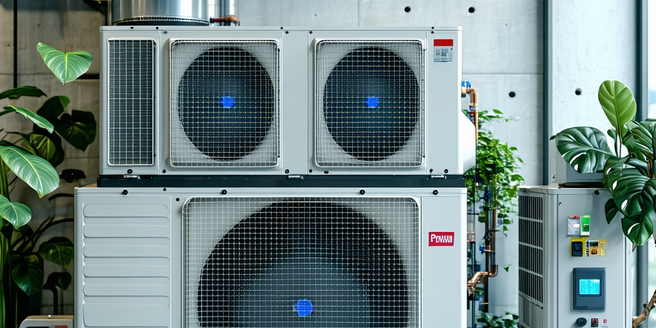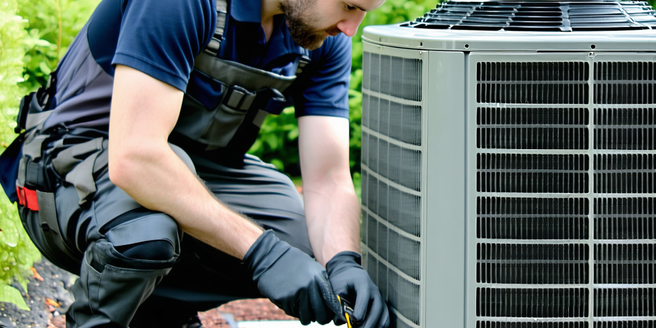Free Hvac System Inspections

Understanding the Importance of HVAC Inspections
| Aspect | Details | Frequency |
| System Efficiency | Ensures optimal performance. | Bi-Annually |
| Energy Savings | Reduces energy bills. | Seasonally |
| Air Quality | Improves indoor air quality. | Yearly |
| System Longevity | Prolongs system life. | Annually |
| Safety Assurance | Prevents hazards. | Bi-Annually |
| Warranty Compliance | Maintains manufacturer warranty. | As Required |
What to Expect During a Free HVAC Inspection
An HVAC inspection involves a comprehensive evaluation of your heating, ventilation, and air conditioning system to ensure efficient operation. A technician will start by checking the thermostat settings to ascertain proper temperature control. They will then inspect electrical connections, lubricate moving parts for smooth functioning, and examine the condensate drain for clogs. Filters will be scrutinized to assess whether they need replacement. Safety controls are also reviewed to ensure they are working reliably. Lastly, system controls will be tested, making sure the start cycle, operation, and shutdown processes are operating correctly. This thorough examination not only enhances performance but also extends the longevity of your HVAC system. Expect detailed feedback on any necessary repairs or upgrades.
How Often Should You Schedule HVAC Inspections?
Regular HVAC inspections are crucial for maintaining optimal system performance and efficiency. It is generally recommended to have your HVAC system inspected twice a year, typically in the spring and fall. These seasons are ideal because they precede the peak usage periods for heating and cooling, allowing time for any necessary repairs or maintenance. As the climate continues to change, regular maintenance becomes even more essential to ensure efficiency and reliability. Regular inspections help identify minor issues before they turn into significant problems, saving you money on costly repairs in the long run. They also ensure your home remains comfortable year-round, regardless of the weather outside. Establishing a routine inspection schedule fosters peace of mind and prolongs the lifespan of your HVAC system.
Signs Your HVAC System Might Need an Inspection
If your HVAC system is displaying unusual behavior, it might be time for an inspection. Signs that an inspection is necessary include strange noises such as rattling or banging emanating from the system. An abnormal spike in energy bills without additional usage could also indicate inefficiency and the need for a professional assessment. Uneven heating or cooling across different areas of your home suggests a problem with airflow or ductwork. Additionally, unpleasant odors or a musty smell may point to mold growth or other issues that require attention. If the system cycles on and off more frequently than usual, it’s time to have a technician take a closer look to prevent a complete breakdown.
Benefits of Regular HVAC System Maintenance
Engaging in regular HVAC system maintenance offers numerous advantages. First and foremost, it ensures optimal performance, guaranteeing your system operates at peak efficiency while keeping your home comfortable. Routine maintenance helps lower energy bills by preventing wasteful operation and prolongs the lifespan of your equipment, delaying the need for costly replacements. It also improves indoor air quality by keeping filters and ductwork clean, which is particularly beneficial for individuals with allergies or respiratory concerns. Additionally, many HVAC companies offer maintenance plans that provide discounts on repairs and priority service calls. Moreover, regular check-ups enhance safety by identifying potential hazards, such as gas leaks or electrical issues, before they escalate into dangerous situations. Overall, it’s a cost-effective approach to home comfort.
Common Issues Found During HVAC Inspections
During an HVAC inspection, several common issues can be identified. One frequent problem is faulty electrical connections, which can create safety hazards and reduce system efficiency. Blocked or dirty filters are another common finding, as they restrict airflow and force the system to work harder than necessary. Regular maintenance can help identify and fix these issues early. Leaks in the refrigerant lines are also typical and can lead to reduced cooling capabilities. Mold or debris buildup in the ductwork may be detected, compromising indoor air quality. Inspectors may find that moving parts require lubrication to prevent wear and tear. Each issue, if addressed promptly, can prevent more serious system failures and extend the life of your HVAC unit.
Choosing the Right HVAC Inspection Service
When selecting an HVAC inspection service, there are several factors to consider to ensure you make the best choice. First, verify that the company is licensed and insured, which offers protection and guarantees professionalism. Experience is key, so look for a service provider with a proven track record and positive customer reviews. In addition, it’s a good idea to ask for references from previous clients to further gauge their reliability. Inquire about the specific services included in the inspection and ensure they align with your needs. Price transparency is also important; ask for detailed pricing information upfront to avoid hidden fees. Lastly, excellent customer service and clear communication from the provider can make the inspection process smooth and stress-free, building trust for a long-term service relationship.
Preparing Your Home for an HVAC Inspection
Proper preparation for an HVAC inspection can streamline the process and ensure accurate results. Begin by clearing the area around the HVAC unit to provide the technician easy access for a thorough evaluation. Replace or clean the filters beforehand to ensure they’re in good condition for inspection. Make a list of any specific issues or concerns you’ve noticed with your system to discuss with the technician. Ensure all access points to the ductwork are unobstructed, facilitating a full examination. If possible, have all relevant documents, like previous inspection reports or maintenance records, available for the technician to review. Finally, set a time for the inspection that is convenient for you, as it may take a couple of hours.
What Happens After an HVAC Inspection?
Following an HVAC inspection, the technician will provide a detailed report outlining the findings. This report typically includes any issues identified, alongside recommendations for addressing them. Before proceeding, make sure to ask any questions if something is unclear in the report. Some may require immediate attention, while others may be noted for future monitoring. The technician might suggest repairs or replacement parts needed to restore optimal system performance. Review this report carefully to understand any urgent fixes or potential improvements that can prevent further complications. In some cases, the inspection might reveal that the system is functioning correctly, offering peace of mind knowing that your HVAC system is in good condition. Routine inspections are essential for ongoing comfort and efficiency at home.
Cost-Saving Tips for HVAC Maintenance
Implementing cost-saving strategies in HVAC maintenance can significantly reduce household expenses. One effective approach is to regularly replace or clean air filters to ensure the system operates efficiently, reducing energy consumption. Utilize a programmable thermostat to optimize energy use by adjusting settings according to occupancy patterns. Seal air leaks around doors and windows to prevent loss of conditioned air, lessening the workload on your HVAC system. Schedule routine professional inspections to catch and address issues early before they necessitate costly repairs. Additionally, ensure unobstructed airflow around vents and the outdoor unit by trimming plants and removing debris. These simple practices can lead to substantial savings on energy bills and prolong system life.
